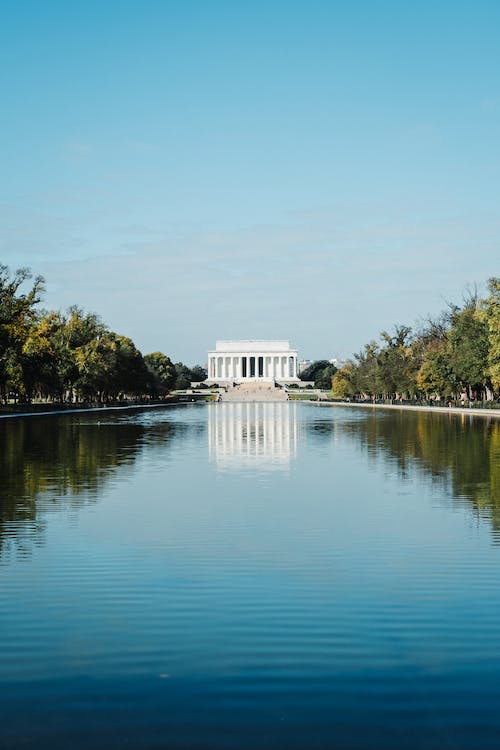The Lincoln Memorial is one of the most astounding memorials in the United States, and one of only several made as a tribute to an American President. Dedicated in 1922, it honors President Abraham Lincoln, the nation’s preserver, and the Great Emancipator during the Civil War. Proponents and builders of the structure incorporate striking Greek design and sculpting, befitting Lincoln’s contribution and legacy. Today, the Lincoln Memorial continues to serve as the symbolism of freedom, honesty, tolerance, and constancy – the virtues the iconic President has valued during his lifetime.

Lincoln Memorial’s History
Three years after his assassination, the first public memorial to Lincoln was erected in Washington, D.C., located in front of the District of Columbia City Hall. However, the U.S. President was a well-loved figure, and many people believed that the statue didn’t fit his services for the country, and a clamor for a grandiose and impressive memorial that fits his legacy had been aired.
Congress heard all the demands and passed a bill in 1867 that established a commission assigned to build a monument. Different builders and designers were enlisted, Clark Mills, an American sculptor eventually chosen to design the monument. His proposal for a 70-foot structure mirrored the nationalistic ambiance at that time. However, charitable subscriptions were insufficient, and the project did not materialize.
It was only at the turn of the 20th century when plans to create a monument were review. Under Illinois Senator Shelby M. Cullom’s leadership, six different bills were filed to resume the project by creating a new memorial commission. After the first five bills failing in 1901, 1902, and 1908 due to Speaker Joe Cannon’s opposition, the sixth bill or Senate Bill 9449 finally passed in 1910. United States President William H. Taft was appointed as the head of the Lincoln Memorial Commission.
The first task was to decide the location and design for the project. Debates surrounding it were controversial, and progress pursued at a steady pace. The commission’s plan was hurdled with questions as many deemed that the Greek temple design devised by Henry Bacon was too flashy, compared to the sixteenth president’s modest character. Meanwhile, the desired location at West Potomac Park was thought to be too inaccessible. Nevertheless, the Lincoln Memorial Commission stood firm with their recommendation.
In 1913, Congress approved the site and the location and allocated a $300,000 budget for the project. Constructions began in March 1914, with the work moved in line with the schedule. Few changes were made along the way. Lincoln’s status was initially planned to stand 10-feet tall, but its height was almost doubled at 19 feet as proponents were concerned that the status may appear smaller than the chamber that housed it. Despite all other modifications, the Lincoln Memorial was completed on schedule.
On May 30, 1922, Commission head William H. Taft, who was then appointed as the U.S. Chief Justice dedicated the Lincoln Memorial. President Warren G. Harden accepted the presentation on behalf of all Americans. Since then, the memorial witness other significant events in the country’s history. One of which was the March on Washington for Jobs and Freedom on August 28, 1963, where about 250,000 people attended and heard Martin Luther King, Jr.’s renowned speech, “I Have A Dream.”
On October 15, 1966, the structure was listed on the National Register of Historic Places. Today, the structure remains well-built and is in outstanding condition, like the strong mark and memory left by the great Abraham Lincoln.

